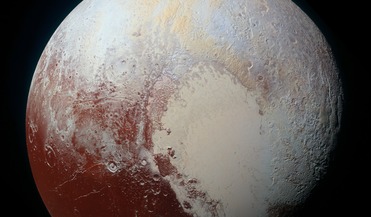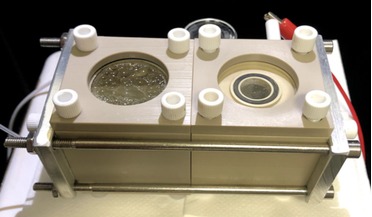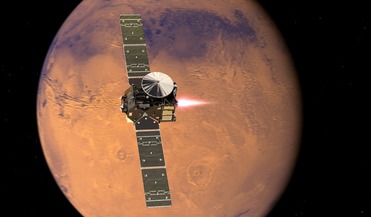 08 April 2019
Rain on the Sun links long-standing solar mysteries
08 April 2019
Rain on the Sun links long-standing solar mysteries
... simulations had predicted that the coronal rain should be found in a solar feature called helmet streamers; large cap-like coronal structures with long pointed peaks that extend high into the corona and can...
 20 May 2019
A thin layer of ice-trapped gas stops Pluto's oceans from freezing
20 May 2019
A thin layer of ice-trapped gas stops Pluto's oceans from freezing
...’s temperature and ice shell thickness over time. Their results, say the team, suggest that this cap of caged molecules would act as a highly viscous thermal insulator between a subsurface ocean and an ice shell to keep...
 13 November 2019
Curiosity uncovers oxygen mystery on Mars
13 November 2019
Curiosity uncovers oxygen mystery on Mars
... planet as the other molecules redistribute themselves to maintain pressure equilibrium. When CO2 is re-released from the polar caps as spring and summer returns, it mixes with the other gases to raise the air pressure again. Nitrogen...
 01 April 2020
Biohybrid can turn CO2 into new products for use on Mars or Earth
01 April 2020
Biohybrid can turn CO2 into new products for use on Mars or Earth
... however, said Yang as there are numerous studies to show that water is relatively abundant in the polar ice caps on Mars and that it likely lies frozen under the martian subsurface over most of the planet. On the...
 12 February 2021
Water vapour spotted escaping from Mars' atmosphere
12 February 2021
Water vapour spotted escaping from Mars' atmosphere
... its surface. Now though, most of that water is either buried underground or locked up in the planet's ice caps. However, a recent analysis of the deuterium to hydrogen ratio (D/H) in water (deuterium is a stable isotope of hydrogen) has revealed...
 08 December 2021
Japanese billionaire heads to the ISS for a 12 day stay
08 December 2021
Japanese billionaire heads to the ISS for a 12 day stay
... the three-person Soyuz spacecraft piloted by cosmonaut Alexander Misurkin will take just over six hours, capping a banner year that many have seen as a turning point for private space travel. On launch day, Maezawa...